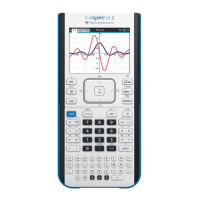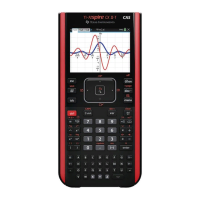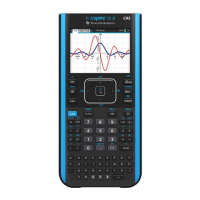332 Programming
Performing symbolic calculations
If you want a function or program to perform symbolic calculations, you
must use a global variable instead of a local. However, you must be
certain that the global variable does not already exist outside of the
program. The following methods can help.
• Refer to a global variable name, typically with two or more
characters, that is not likely to exist outside of the function or
program.
•Include DelVar within a program to delete the global variable, if it
exists, before referring to it. (DelVar does not delete locked or linked
variables.)
Differences between functions and programs
A function defined in the Program Editor is very similar to the functions
built into the TI-Nspire™ CAS software.
• Functions must return a result, which can be graphed or entered in a
table. Programs cannot return a result.
• You can use a function (but not a program) within an expression. For
example:
3 ¦ func1(3) is valid, but not 3 ¦ prog1(3).
• You can run programs from Calculator only. However, you can
evaluate functions in Calculator, Notes, Lists & Spreadsheet, Graphs &
Geometry, and Data & Statistics.
• A function can refer to any variable; however, it can store a value to
a local variable only. Programs can store to local and global variables.
Note: Arguments used to pass values to a function are treated as
local variables automatically. If you want to store to any other
variables, you must declare them as
Local from within the function.
• A function cannot call a program as a subroutine, but it can call
another user-defined function.
• You cannot define a program within a function.
• A function cannot define a global function, but it can define a local
function.
Calling one program from another
One program can call another program as a subroutine. The subroutine
can be external (a separate program) or internal (included in the main
program). Subroutines are useful when a program needs to repeat the
same group of commands at several different places.

